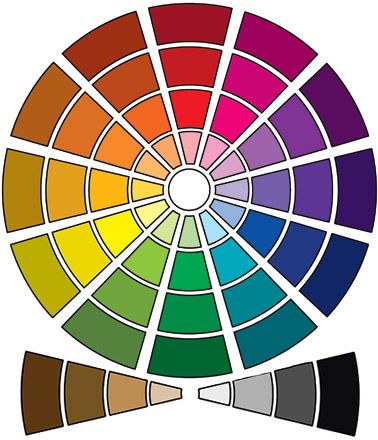Will a looser fit & dark colors increase sun protection? Yes, a properly fitting shirt in a dark color does help a shirt’s ability to keep you safe from the sun.

This father-daughter team would be better protected in darker colors. Neither of the shirts in this image is tight enough to stretch the fabric, which is where a shirt will lose some of its ability to protect your skin.
Exposure to the sun’s harmful UV rays will lead to skin problems, as well as sunburn which leads to skin cancer, and early aging. Sunscreen is important in protecting your skin from the sun. Even more, covering your skin with clothing is another tool for your toolbox.
Yes, sunscreen is important in our skin protection routine. It works well with sun-blocking clothing to keep you safe.
Wearing loose-fitting clothing in darker colors will boost your skin protection to a whole other level. The clothing doesn’t wear off, it is there until you undress. That’s all you have to do is wear it and you are protected, at least where you are covered.
You will need to apply sunscreen, and reapply all day to all the parts of your skin that are not covered in clothing.
Did you Know Darker Colors And Looser Fit Equals Safety?
Yes, the Science In Color is used by UPF clothing manufacturers to help keep safe from the sun. This assures us that dark colors for your clothing will keep you better protected from the sun. But, did you know what part the fit of your clothing plays in the whole picture?
There are several parts to making a really great sun blocking shirt and not the least is the fit. Loose-fitting clothing is important. Allowing the air to move and remove the warmth that the UV rays produce when being absorbed.
Remember, darker colors absorb the energy from the sun’s rays. That heat must go somewhere. If this heat is held against your skin during the warmer months, you may become uncomfortable. That is what happens when the shirt fits too tight. Because the heat is trapped and has nowhere to go.
Allowing that heat to escape allows your body to cool itself. As your body’s heat raises to the surface of your skin, energy is produced as the heat escapes. This pushes air away when you have a loose fit. When the clothing is tighter, it can’t get away from the surface of your skin.
Then you will start to perspire, and get damp and sweaty. When allowed to evaporate as the heat gets to your skin’s surface, there is automatic cooling. Wearing loose-fitting clothing allows the air to circulate under your clothing and you are cooler.
This should help prevent heat rashes and other skin problems that arise from sweating, keeping your skin healthier.
Clothing is a Physical Barrier Between You and the Sun
The barrier that loose-fitting clothing gives you lasts as long as you leave the garment on, and the item is not worn out, as in threadbare. All fabric wears with the wearing and the washing and drying of the garment.
If your shirt has worn places in the back from sitting in a vehicle driving a lot, or has become thin and worn from age, the amount of protection you will get on your back from that shirt is reduced.
Newer t-shirts that are still thick are better than the old favorites that you’ve had for a long time. I inquired at the help desk for Coolibar how long the life of the garment is in their estimation. I was told that their garments are lifetime is out in 2 years.
This was a couple of years ago. I assume some of the techniques have improved. They now say some of the clothing will protect you as long as you have it. I am not sure how much it will be protecting you after a while, but any protection is better than none.

What is Considered A Darker Color?
This color wheel from 1917 shows how the tones of the colors can all be pretty dark. Green in the deeper tones absorbs the sun’s rays. Black, navy blue, and even deep red and brown are considered darker colors.
White and yellow offer less protection. However, deeper tones of yellow work well. White, as it goes to beige or grey has more protection than stark white. Tones of color that are deeper protect you better.
Did you watch any of the golf tournaments last weekend? I think it was the Players Tournament. No golfing for me, but, I am a people watcher. I love to watch golf, all the green grass, the landscaping around the course, and most of all the people.
What I saw last week was a lot of people wearing white. They were fanning and sweating, and I assume had sunscreen. Not even half the men or women had sun hats. More had caps, but many had the mesh back that let the sun in.
These people had paid for a day in the sun to watch golf. They are wearing white clothing, most of which were knit and tightly fitting. The sun gets through all the places the clothing is tight and stretched. How many remembered to apply sunscreen often enough to protect their skin?
About the mesh that makes caps cooler in the hot times of the year, the sun gets through to your scalp. Yes, scalps sunburn too. You should see my husband’s scalp. He has had many skin cancers removed from his scalp. And they keep forming. He is paying for his years in the sun.
Information Resources
I spend a good bit of time researching the information to help you by sharing information. These blogs about sun blocking clothing, and suggestions that I share come from legitimate resources. Here is one resource I use often. Finding news of skin cancer, allows me to share the real reason to protect our skin from too much sun.
We now understand how important it is to cover our skin. Clothing is the easiest way to cover your skin.
Skin Cancer Foundation @ skincancer.org
Center For Disease For US Gov will also give you some insight as well.
Sami’s Take On 7 Risks Kids Face from the Sun “Just Because They Are Kids.”
There is one more risk, that parents need to keep in mind that can make their kids at higher risk for sun damage. Medication
Check the labels of the medications your kids need. Make sure they are not on the list to raise your kid’s risks.
List of drugs for young kids’ parents:
- Antihistamines: These are medicines that help with allergies and allergic reactions.
- Coal Tar and Derivatives: These are medicines that treat skin conditions such as eczema and psoriasis.
- Contraceptives, Oral, and Estrogens: Medicines used to prevent pregnancy and treat certain medical conditions.
- Non-steroidal Anti-Inflammatory Drugs: These are medicines used to relieve pain and reduce inflammation, but should only be given under the supervision of a doctor.
- Phenothiazines: These are medicines used to treat mental health conditions such as schizophrenia.
- Psoralens: These are medicines used to treat skin conditions such as vitiligo.
- Sulfonamides: These are antibiotics used to treat bacterial infections.
- Sulfonylureas: These are medicines used to treat diabetes.
- Thiazide Diuretics: These are medicines used to treat high blood pressure and heart failure.
- Tetracyclines: These are antibiotics used to treat bacterial infections.
- Tricyclic Antidepressants: These are medicines used to treat depression, but should only be given under the supervision of a doctor.
It’s important to always consult with a healthcare professional before giving any medication to your child, as they can advise you on the proper dosage and potential side effects.
Thank you,
Sami
When you choose to wear loose-fitting, darker-colored clothing, you are protecting your skin from the sun’s harmful UV rays.
By creating an actual physical barrier between your skin and the sun’s rays, you are reducing your exposure to harmful radiation. Wearing sun blocking clothing lowers your risk of developing skin problems.
When choosing your sun-protective clothing, be sure to consider the fit, color, and fabric type. This will ensure that you’re getting the best possible protection for your skin.
And the proper fabric type would be fabrics like denim, or other tightly woven, fabrics. Not tightly fitting clothing that must stretch to fit. Stretching the fabric lets the sun to your skin through pinholes in the weave.
Thank you,
Sami